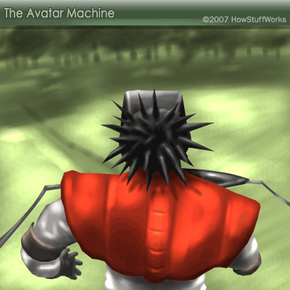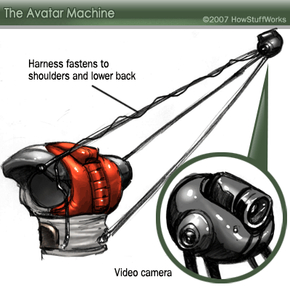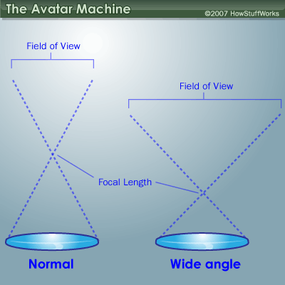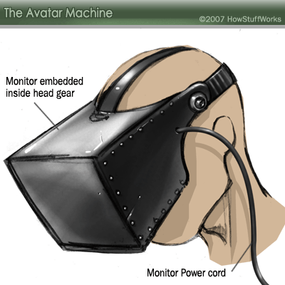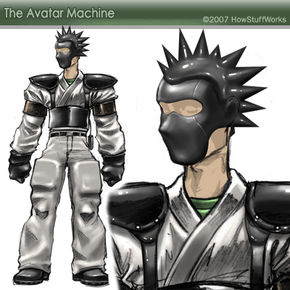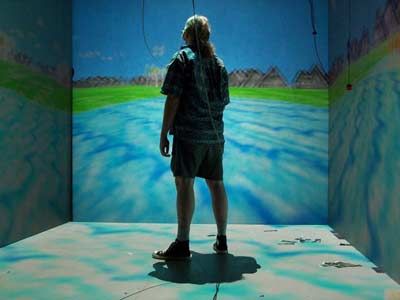Unless you've had an out-of-body experience, you've spent your whole life experiencing everything from the first-person perspective. But what if you could step outside your body temporarily and experience life from a more remote point of view? That's a question that interested a design student named Marc Owens, who invented a device called the Avatar Machine in an attempt to create this kind of experience.
In terms of computer games and virtual environments, an avatar is a digital representation of a real human being. Avatars can be almost anything as long as an actual person controls them. By contrast, digital characters or creatures under the control of a computer are called bots.
Advertisement
If you've ever played a video game like World of Warcraft (WOW), Tomb Raider or Grand Theft Auto, you know about games that use a third-person perspective. In a third-person perspective game, you can see the character you're playing. In most games like this, the standard camera position is above and behind the character, as if you were floating a few feet behind it. Owens designed the Avatar Machine to let users see themselves from this perspective as if they were characters within a virtual environment.
Owens has said that the MMORPG WOW specifically inspired his invention [source: Régine Debatty]. The device only really requires a harness and helmet, but Owens didn't stop there -- he designed a full costume. He added long spikes on the helmet as well as a red padded section on the upper back of the torso, brown arm bands, black gloves and puffy white pants. The costume resembles the sort of fantasy characters you'd encounter in WOW.
Another inspiration for Owens' invention was his interest in human behavior within gaming environments. He wanted to see if people behaved differently when they observed themselves from a third-person perspective. He tested his invention in several locations, including Hyde Park in London, England. He observed that some people began to move like the characters in WOW -- they'd take large steps and swing their arms with enthusiasm, much to the bemusement of pedestrians passing by.
In this article we'll look at the components Owens used to create the machine as well as some potential practical applications of the device.
Advertisement
